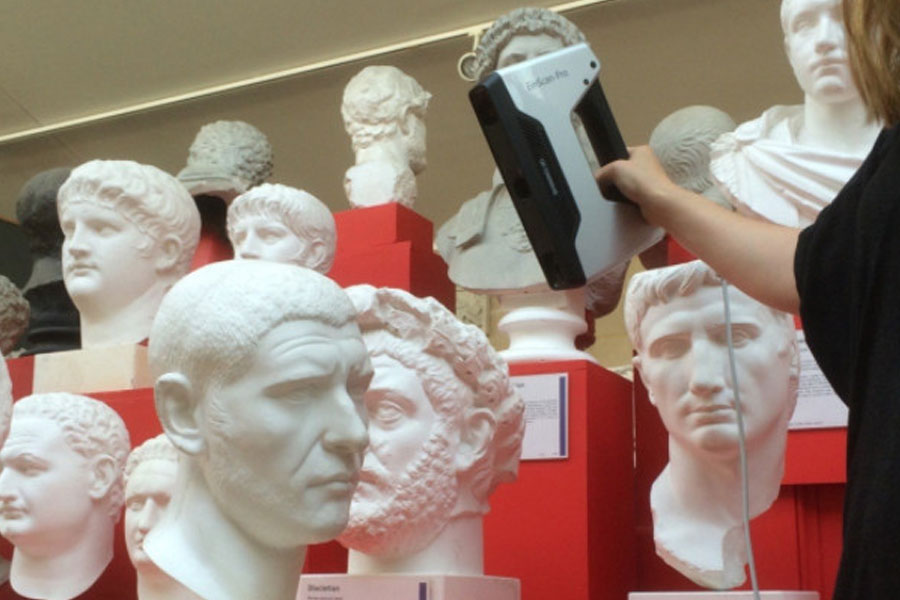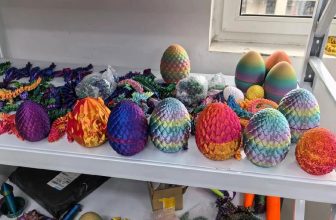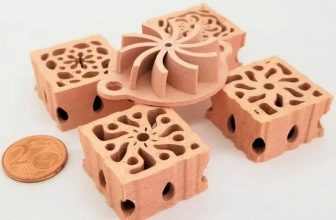
V&A, the world’s largest decorative design art museum, uses a three-dimensional scanner to open the door to the public’s collection of art.
V&A (Victoria and Albert Museum), the world’s largest decorative and design art museum, uses a three-dimensional scanner to scan the collection of sculptures and open the data to the public. In the entire European and American regions, three-dimensional scanning of sculptures and other artworks is no longer an exception.
What is the significance of 3D scanning to the art world, so that world-renowned schools and museums have begun to try 3D scanning?
What is the significance of 3D scanning to the art world?
1.Let the disadvantaged groups have access to art and realize the true “equality of all beings” in art
It is easy for ordinary people to visit museums and see art exhibitions, but for those who are blind and disabled, it is almost impossible. Even if it takes a lot of effort to reach the destination, for protection reasons, those cultural relics and art institutions will not allow visitors to touch them. For these disadvantaged groups, this is not fair.
What the traditional way can’t do, 3D technology can!
Using three-dimensional scanning to obtain three-dimensional data of the artwork, people with inconvenient legs and feet can browse the “virtual museum” at home; at the same time, 3D printing can also be carried out, allowing blind people to touch the art from zero distance and nurture the soul.
2.Let the fragile, difficult-to-display, and dying cultural relics and heritage return to the sight of all living beings
According to statistics released by UNESCO, 48 World Heritage areas are currently in danger. In the 20-year history of the World Heritage Fund, nearly 800 sites have been endangered. In addition, wars and conflicts, urbanization, natural disasters and large-scale tourism are causing irreparable damage to global art, architecture and heritage.
If three-dimensional scanning of these precious heritage and cultural relics can be carried out to allow the public to browse three-dimensionally online, on the one hand, it can avoid the damage caused by large-scale tourist visits to cultural relics; on the other hand, some of them are not suitable for display. Cultural relics and artworks can also return to the public eye in the form of three-dimensional models, which are more three-dimensional and lifelike than photos, and it is also convenient for related institutions to research and restore cultural relics and artworks.
3.In art education, make the perception of space, angle, and light more direct
Under the traditional education method, art students can only admire art through visits and photos. If you want to have more in-depth research and observation of masterpieces, it is not so easy. Especially works that are very unique in terms of angle, light and spatial structure.
However, 3D scanning can do it. Students can obtain the 3D data of the artwork, and view the form, angle, and space of the artwork in a 360-degree view in the modeling software, which is convenient for students to conduct artistic observation and research. If they really like it, they can also 3D print one and take it home.
In fact, in the process of practice, some people burst into new inspirations and re-created art. For example, the recent 3D data of Broken Arm Venus has triggered people’s re-creation:
Because of the missing arm, the statue of Venus has always aroused people’s infinite imagination. Hobbyists and students from all walks of life, after reading the 3D data of Venus, began to analyze its arm spontaneously, and began to design its arm posture, and carried out 3D printing trial assembly… (regardless of the result , At least for these lovers, this process is a kind of enjoyment~)
The 14th century was the “revival of artistic propositions” derived from human rights
The 21st World is an “art dissemination movement” derived from 3D technology
I believe that more and more art treasures will be displayed in front of the public, and more and more enthusiasts with open minds will burst out inspiration to innovate and create art. If the Renaissance Movement in the 14th century brought back human rights and allowed people to see the awakening of art, then in the 21st century, an “art communication movement” derived from 3D scanning and 3D printing technology is emerging. It allows art to step down from a high altar, listen to the announcements of sentient beings, return art from life to life, let art concepts higher than life come into life, and integrate technology and art into inseparable two. Parts.





